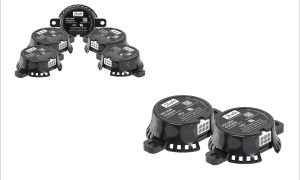The new ‘Smart Store’ will work as Danfoss’ test centre for energy efficiency technology. The Smart Store is expected to be approximately 50 percent more energy efficient than a typical supermarket with a first-generation CO2 refrigeration system.
With the global population projected to reach 10 billion by 2050, there is a pressing need for investments in sustainable food retail and storage methods. This urgency stems from the necessity to provide sustenance for the increasing population. This situation puts mounting pressure on energy demands, expenses, and the imperative to reduce food wastage. Considering food waste as an emitter of greenhouse gases underscores its contribution of up to 10 percent of the planet’s greenhouse gas emissions.
Project
To tackle these challenges head-on, the upcoming Danfoss supermarket is anticipated to achieve around 50 percent greater energy efficiency than a standard supermarket equipped with a first-generation CO2 refrigeration system and lacking energy efficiency innovations. Moreover, it’s projected to outperform a similar local store already equipped with several energy efficiency solutions by around 20-30 percent in terms of efficiency.
Revolving around environmental sustainability, remarkable efficiency, and integrated automation technologies, this novel ‘Smart Store’ stands as a source of motivation for food retailers in a time marked by escalating energy expenses, emissions, and increasing food wastage. Jürgen Fischer, President, Danfoss Climate Solutions, remarked that supermarkets and retail food stores are an integral part of communities worldwide, but they are also big energy consumers. The average profit margin for a large food retailer is just 1.7 percent, which puts every operating cost under scrutiny. Energy is where significant savings can be achieved with relatively low investment and good payback times. The range of new solutions in the ‘Smart Store’ demonstrates the significant savings that supermarkets can achieve, with a typical payback time of 3-4 years. The new supermarket will waste less energy and reduce food waste by using world-class heating and cooling technology.
The Smart Store supermarket demonstrates that it’s possible to design and build an energy-efficient supermarket with today’s solutions. And it also makes good business sense.
• Solar power is the supermarket’s primary energy source, with 100 kW solar panels on the building’s roof providing green energy to support the supermarket operations.
• Heat capture and reuse is also key to the energy efficiency of the supermarket, with up to 90 percent reduction in supermarket heating costs expected. Excess heat is the world’s largest untapped source of energy.
• Heat recovery units fitted in the ‘Smart Store’ are designed to recover the waste heat from all the refrigeration systems. The recovered heat is reused to heat the store and produce domestic hot water, with any additional heat shared with residents of the surrounding town through a district energy network.
• Other initiatives, such as installing doors on refrigerator and freezer cases, will save around a third on energy use. In contrast, LED lighting uses up to 85 percent less electricity than incandescent bulbs. Automation and monitoring of the ‘Smart Store’ adds another layer of energy saving.
Jürgen Fischer added, “Danfoss has reimagined what food retail stores could look like in the 21st century. Danfoss’s most cutting-edge technology and energy-efficient food retail solutions are being brought together into one retail site for the first time. But the new Smart Store supermarket is only the beginning. Because it will also serve as an Application Development Center, a ‘live’ testing site for new technologies which we hope will inspire food retailers worldwide to move towards zero emissions supermarkets – while making economic sense.”
Results
Denmark’s recently established flagship “Smart Store” supermarket uses sustainable energy sources. It reuses surplus heat generated by its cooling units, reducing up to 90 percent in heating expenses for the supermarket. This establishment serves as a fully operational supermarket and doubles as a testing research hub for evaluating new and emerging technologies.
Cookie Consent
We use cookies to personalize your experience. By continuing to visit this website you agree to our Terms & Conditions, Privacy Policy and Cookie Policy.















